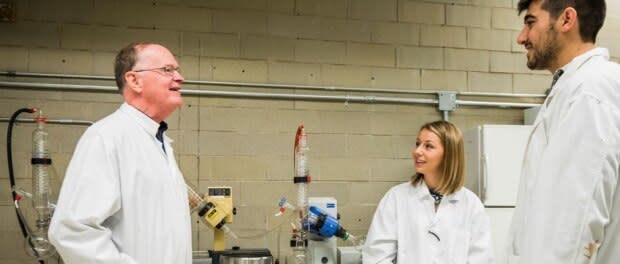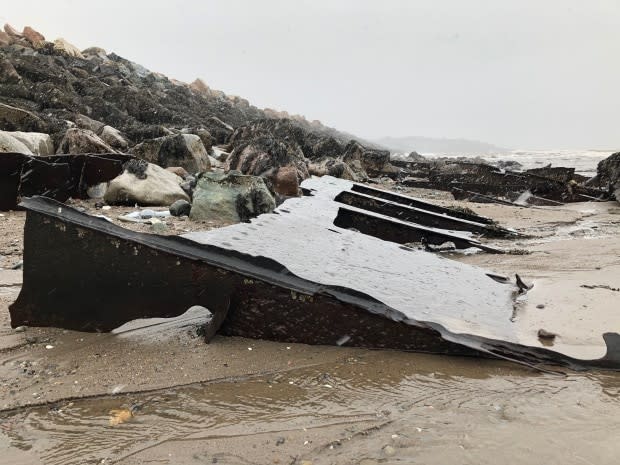Manes P wreck sparked career in chemistry for Carleton professor
When Carleton University chemistry professor David Miller sees photographs of the wreck of the Manes P, his mind turns immediately to oil.
Dirty Bunker C had leaked from the stricken cargo ship's tank, and the slippery film coated its stairs, walkways and, seemingly, everything else below decks.
"It was slippery and wet and cold," recalls Miller. "It was not a pleasant place to be, and in fact, objectively, quite dangerous."
In the early morning hours of February 3, 1970 the Manes P had been anchored in heavy weather off the port of Saint John when the wind and waves began to push it toward shore.
The 444-foot-long cargo ship was still dragging its anchor when it smashed against the rocks of the Partridge Island breakwater, puncturing its hull.

Miller was a Saint John High School student when he went aboard the ship some weeks later to help retrieve objects purchased as salvage by the father of a school friend.
As it happened Miller's adventure aboard the oily ship would lead to a long and accomplished career in science.
As a graduate student at UNB in the mid 1970's he returned to the site of the wreck armed with a shovel. He dug into mud at low tide to retrieve samples of the spilled oil and the fungi that clung to it.
His 1977 graduate thesis was titled: Biological activity of fungi isolated from the Bay of Fundy on Bunker C oil.
"Around that time there was a lot of research internationally, including in western Canada, on organisms that might be able to degrade oil," he said.
The conclusion: Filamentous fungi were at work degrading the oil. He suspects that if the site were to be excavated today, 50 years on, only relatively harmless lumps of tar would be found.

From that research he went on to survey fungi in the Bay of Fundy and to study, among other things, drugs that can be found in fungi.
He has since sat on international panels, including the World Health Organization, published more than 350 papers on fungi and fungal toxins, and co-written 10 books on the public health aspects of exposures to fungi.
Miller says people are often surprised to learn the majority of oil found in the world's oceans today comes from natural seepage up from the sea floor, rather than from man-made spills.
That means organisms already exist in nature ready to go to work degrading the oil.
"If there's oil there then one of god's creatures can eat it," he says.

